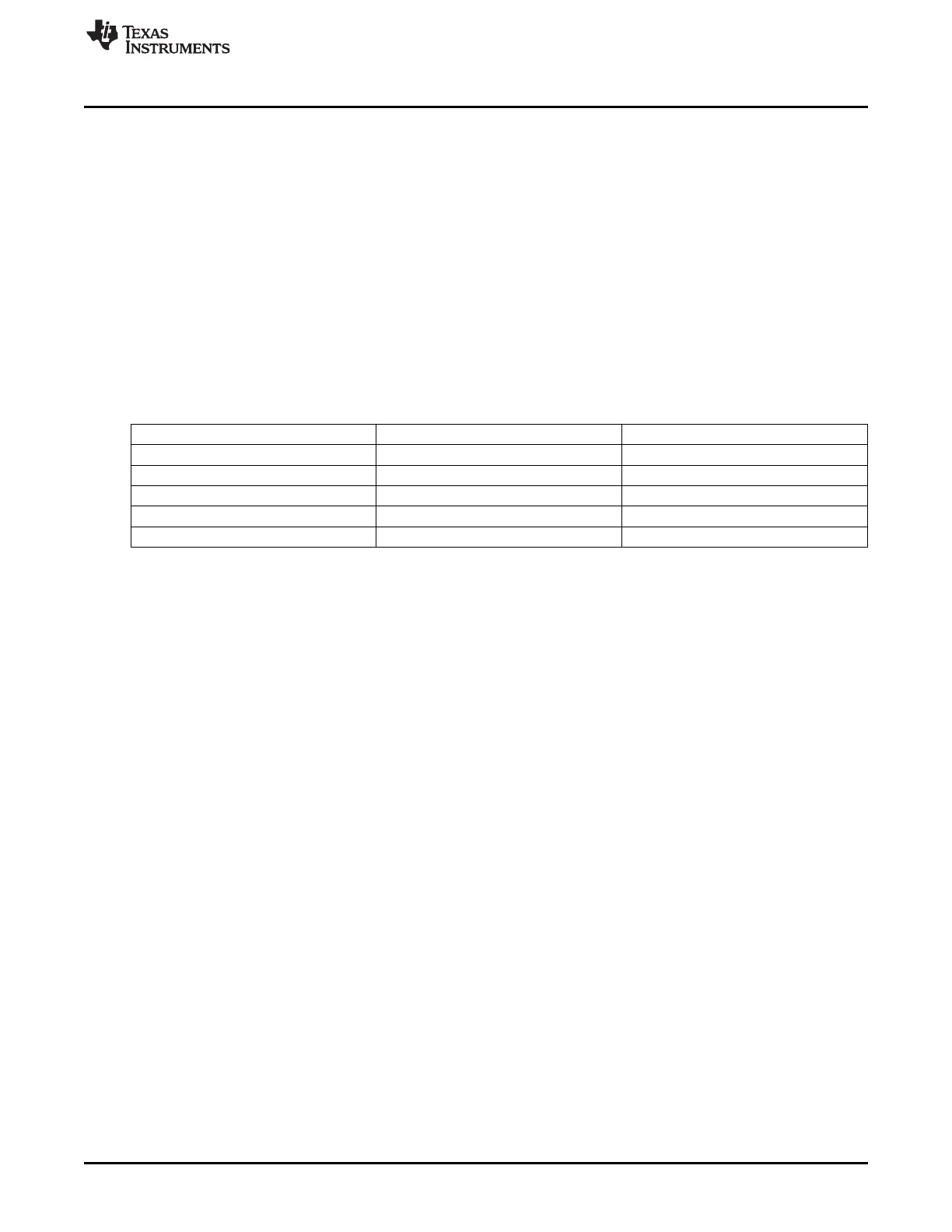www.ti.com
Functional Description
13.3.6 Interrupt Conditions
13.3.6.1 Highlander 0.8 Interrupts
13.3.6.1.1 Highlander Interrupt Basics
The interrupt mechanism is Highlander 0.8-compliant and relies on the ipgvmodirq IP Generic. The
ipgvmodirq module supports hardware-initiated interrupts, each of which can also be individually triggered
by software. An interrupt mask function allows each interrupt to be masked or enabled. The software can
read all of the raw interrupts or only those that are unmasked.
All pending interrupts in the LCD module must be serviced by the Host’s Interrupt Service Routine before
it exits.
The Interrupt Module registers are described in the following table.
Table 13-12. Highlander 0.8 Interrupt Module Control Registers
Address Offset Name Description
0x58 Reg22 Interrupt Raw Status Register
0x5C Reg23 Interrupt Masked Status Register
0x60 Reg24 Interrupt Enable Set (Unmask)
0x64 Reg25 Interrupt Enable Clear (Mask)
0x68 Reg26 End of Interrupt Indicator
13.3.6.1.2 Raw Status Register
Interrupts are associated with a bit position. For instance, Hardware Interrupt 0 is physically connected to
bit 0 of the interrupt controller and all Sets, Clears, and Masks to this interrupt will reference the Bit 0
location of the interrupt vector. Likewise, Hardware Interrupt 1 is referenced by bit 1 of the interrupt vector,
and so on.
The Host CPU can see all the interrupts that have been set, regardless of the interrupt mask, by reading
Reg22, the Raw Status Register.
If the Host CPU writes a ‘1’ to a bit position in Reg 22, it will do a software set for the interrupt associated
with that bit position.
13.3.6.1.3 Masked Status Register
The Masked Status Register contains all the pending interrupts that are unmasked (enabled). The
Interrupt Service Routine should read this register to determine which interrupts must be serviced.
13.3.6.1.4 Interrupt Enable Set Register
To unmask an interrupt, the Host CPU writes a ‘1’ to the appropriate bit position of the Enable Set
(Unmask) register.
13.3.6.1.5 Interrupt Enable Clear Register
To mask an interrupt, the Host CPU writes a ‘1’ to the appropriate bit position of the Enable Clear (Mask)
register.
13.3.6.1.6 End of Interrupt Register
The ipgvmodirq module supports level or pulse interrupts to the CPU. For pulse interrupts, the Host must
write to an end-of-interrupt (EOI), memory-mapped address to indicate that the Interrupt Service Routine
has completed and is exiting. Any pending interrupts that have not been serviced will trigger another
interrupt pulse to the Host CPU.
1119
SPRUH73H–October 2011–Revised April 2013 LCD Controller
Submit Documentation Feedback
Copyright © 2011–2013, Texas Instruments Incorporated

